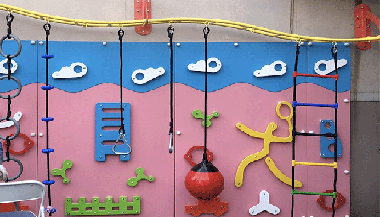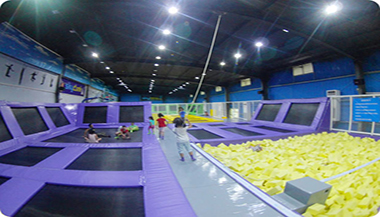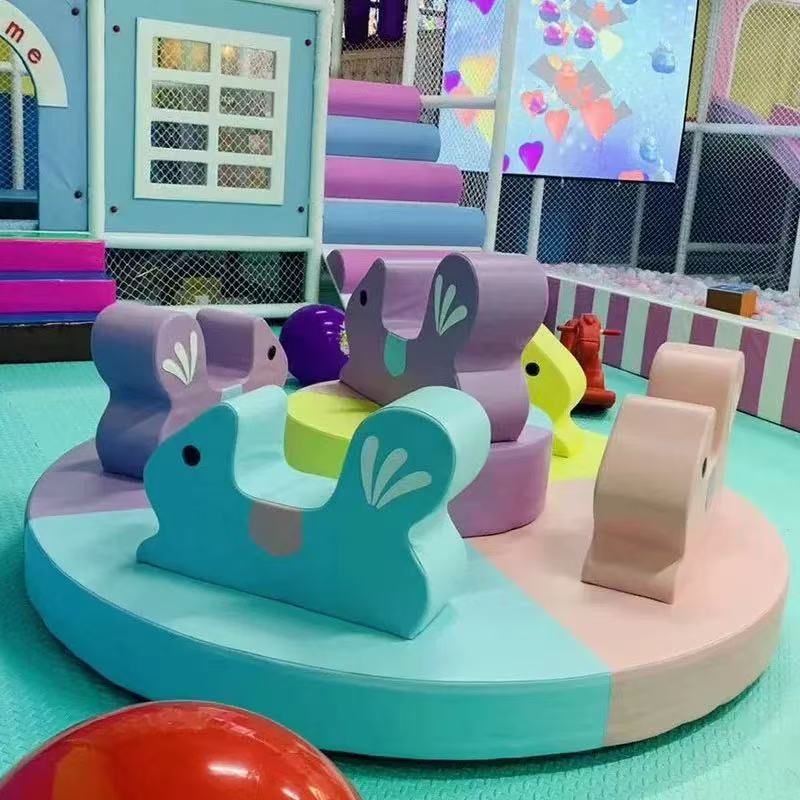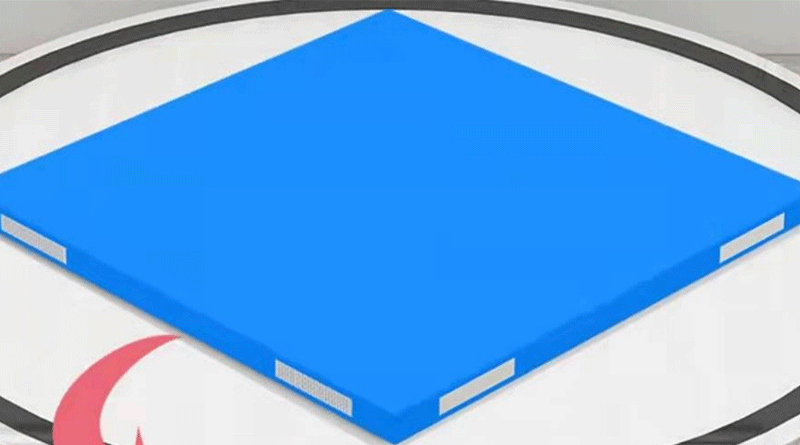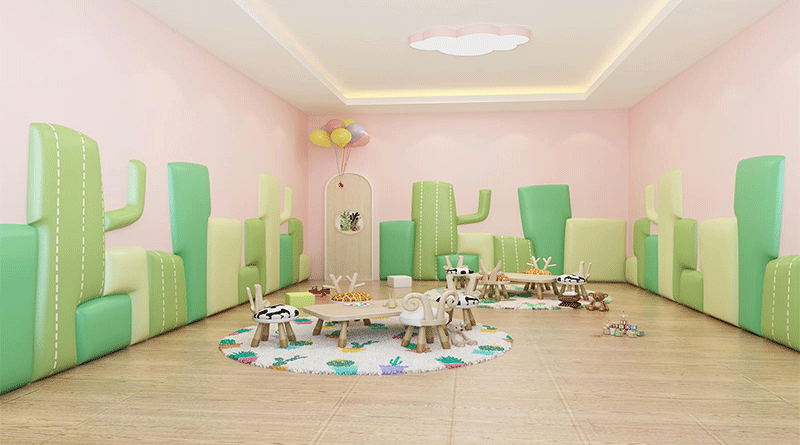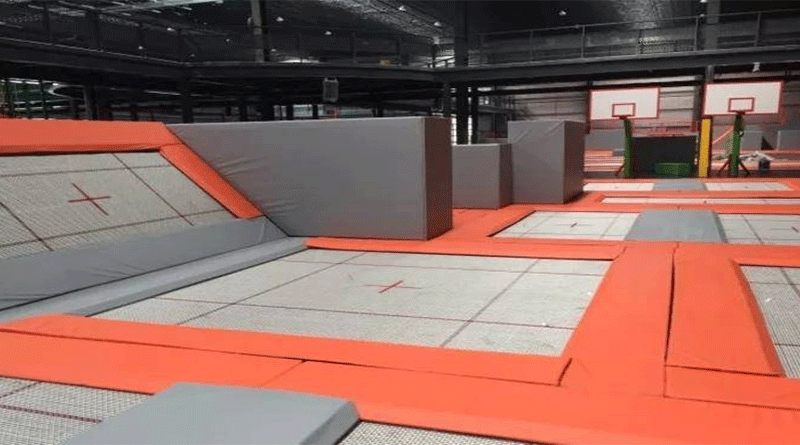Materials and Design Features of Environmentally - Friendly Outdoor Playground Equipment
 Feb 10,2025
Feb 10,2025In an era where environmental protection is of utmost importance, the demand for environmentally - friendly outdoor playground equipment is on the rise. These play structures not only provide children with a fun and safe play area but also contribute to a sustainable future. Let's explore the materials and design features that make these playground equipment eco - friendly.
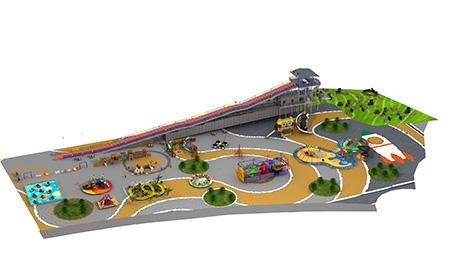
I. Environmentally - Friendly Materials
A. Recycled Plastics
Source and Composition: Many eco - friendly playground equipment utilize recycled plastics, which are sourced from post - consumer plastic waste such as plastic bottles, containers, and packaging materials. These plastics are melted down and re - processed into durable building materials for playground components like slides, benches, and climbing structures. For example, high - density polyethylene (HDPE) recycled plastic is commonly used due to its strength, weather - resistance, and low maintenance requirements.
Benefits: Using recycled plastics reduces the amount of plastic waste that ends up in landfills or oceans. It also conserves natural resources by minimizing the need for virgin plastic production, which requires significant amounts of fossil fuels and energy.
B. Reclaimed Wood
Origin and Treatment: Reclaimed wood comes from old buildings, barns, or demolished structures. Instead of being discarded, this wood is salvaged, cleaned, and treated to be used in playground equipment. The treatment process usually involves non - toxic preservatives to ensure the wood's durability against rot, insects, and weather elements.
Advantages: Reclaimed wood gives playgrounds a natural and rustic look. By reusing wood, it reduces the demand for new logging, thus protecting forests and the biodiversity they support. Additionally, the character and unique patina of reclaimed wood add a special charm to the play area.
C. Sustainable Metals
Types and Recycling: Aluminum and some types of steel are popular sustainable metal choices for outdoor playground equipment. Aluminum is highly recyclable, and recycled aluminum requires only a fraction of the energy needed to produce new aluminum from bauxite ore. Similarly, recycled steel can be used to make components like support frames and fasteners.
Durability and Environmental Impact: These metals offer excellent durability, ensuring the long - term use of the playground equipment. Their recyclability means that at the end of the equipment's life cycle, the materials can be easily recycled again, closing the loop on the material's environmental impact.
II. Environmentally - Conscious Design Features
A. Energy - Efficient Design
Natural Ventilation and Lighting: Environmentally - friendly playground equipment is often designed to take advantage of natural ventilation and lighting. Open - air structures, such as climbing nets and pergolas, allow for better air circulation, reducing the need for artificial cooling systems. Additionally, large, well - placed openings in playhouses or shelters enable natural light to penetrate, minimizing the reliance on electric lighting during the day.
Solar - Powered Accessories: Some playgrounds incorporate solar - powered elements, like solar - powered lights for safety during evening hours or solar - powered interactive panels. These solar - powered components harness the sun's energy, reducing the overall energy consumption of the playground and relying on a renewable energy source.
B. Water - Conservation Design
Rainwater Collection and Drainage: Playground equipment and surrounding areas may be designed with rainwater collection systems. Gutters and collection tanks can capture rainwater, which can then be used for irrigation of nearby plants or for cleaning the playground equipment. Efficient drainage systems are also installed to prevent waterlogging, ensuring the safety of the play area and reducing the risk of water - related damage to the equipment.
Water - Resistant and Low - Maintenance Surfaces: Using water - resistant and low - maintenance materials for the equipment's surfaces reduces the need for frequent cleaning with large amounts of water. For example, certain types of composite materials used for slides and platforms are not only water - resistant but also easy to clean with a minimal amount of water and mild cleaning agents.
C. Safety and Longevity - Oriented Design
Robust Construction for Durability: Environmentally - friendly playground equipment is designed with robust construction to ensure long - term use. This reduces the frequency of replacement, minimizing the environmental impact associated with manufacturing new equipment. Strong connections, high - quality materials, and proper engineering ensure that the equipment can withstand the wear and tear of regular use by children.
Safety - First Design Principles: Safety is a top priority in the design of all playground equipment, and eco - friendly designs are no exception. Features such as rounded edges, non - slip surfaces, and appropriate safety barriers are incorporated to prevent injuries. By ensuring the safety of the equipment, it can be used for a longer time without the need for premature replacement due to safety - related issues.
In conclusion, environmentally - friendly outdoor playground equipment combines innovative materials and thoughtful design features to create a play environment that is both fun and sustainable. These choices not only benefit the environment but also contribute to the well - being of children and the communities they live in.


